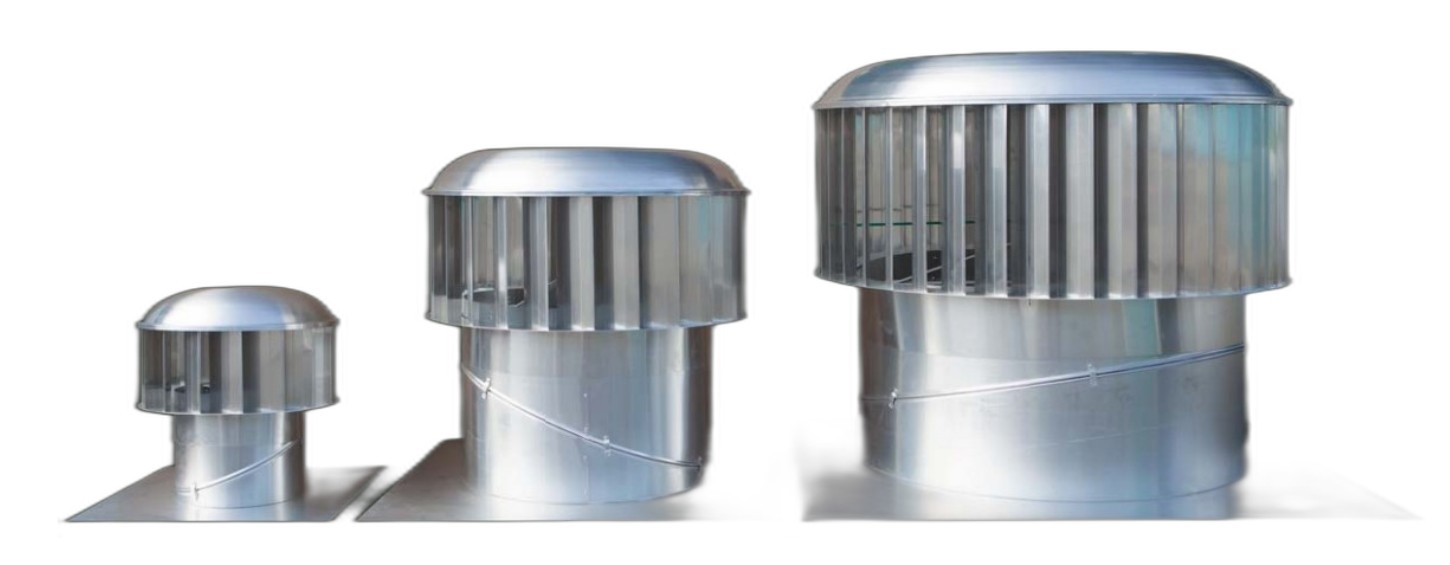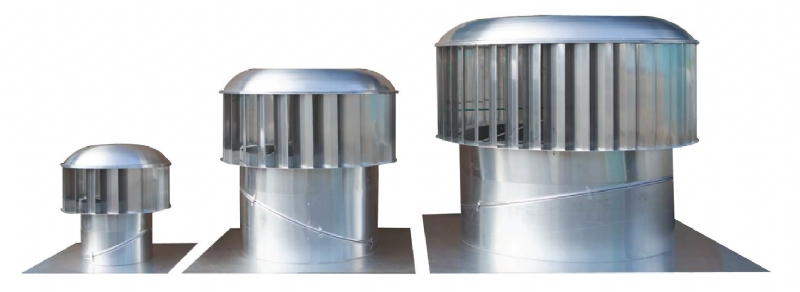Green-Vent Wind is more suitable for use in industrial and commercial areas, and even very low wind speeds are sufficient to rotate the aspirator. Low pressure is created in the part under the wind and the air moving in this low pressure zone comes out between the blades of the aspirator.
In this way, there is a continuous flow of air through the Green-Vent Wind. Due to the centrifugal force generated by the rotation of the Green-Vent Wind, fresh air constantly replaces the hot and dirty air thrown out of the wings
Even when there is no wind, due to temperature differences and heat flow, Green-Vent Wind always ensures ventilation. Green-Vent Wind is resistant to rain according to the 'Dynamic rain infiltration at low speed' test.
Features
• Vertical blade technology for better performance at all wind speeds.
• Up to 3 times the suction capacity compared to round shaped extractors.
• Lightweight but rust-free construction thanks to highly resistant aluminum construction
• 3 different measures for cost efficiency
• Operation without electricity
• Compliance with wind load test according to AS4740
• Suitability for low speed dynamic rain tightness test
• Ventilation all year round
• High quality and accuracy bearings
• Better ventilation thanks to larger exhaust opening in all dimensions.
• 15-year manufacturer's warranty
• Optional 12V DC motorized damper for adjusting the air volume.

What are the basic principles of ventilation in a building?
For any ventilation system to work effectively there must also be appropriate amount of inlets vents, relative to the amount of Roof Ventilators, in order to access the cooler and fresher air on the outside of the building.

Figure-1 Figure-2 Figure-3
Figure-1: In a building without ventilation, hot and dirty air stays inside.
Figure-2: This building can be considered as a building with ventilation, but the Green-vent Wind roof aspirators cannot be fully efficient because there is not enough opening for fresh air intake.
Figure-3: In this building, Green-vent Wind easily exhausts hot and polluted air, as there are sufficient openings for fresh air to enter.
|
|
|
|||||||||||||||||||||||||||||||||||||||||||||||||||||||||||||||||||||
|
|
Dimensions
Efficiency Table
|
|||||||||||||||||||||||||||||||||||||||||||||||||||||||||||||||||||||






